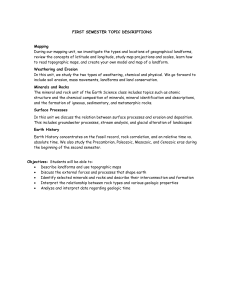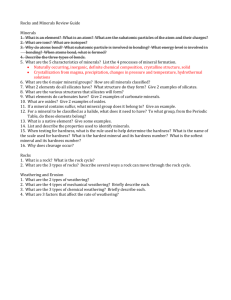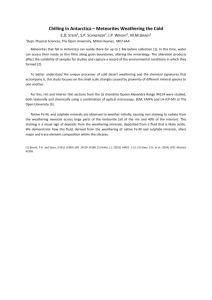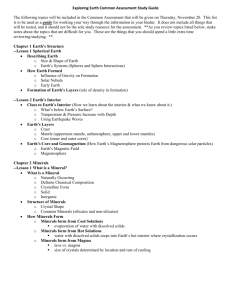ENR 1101
advertisement
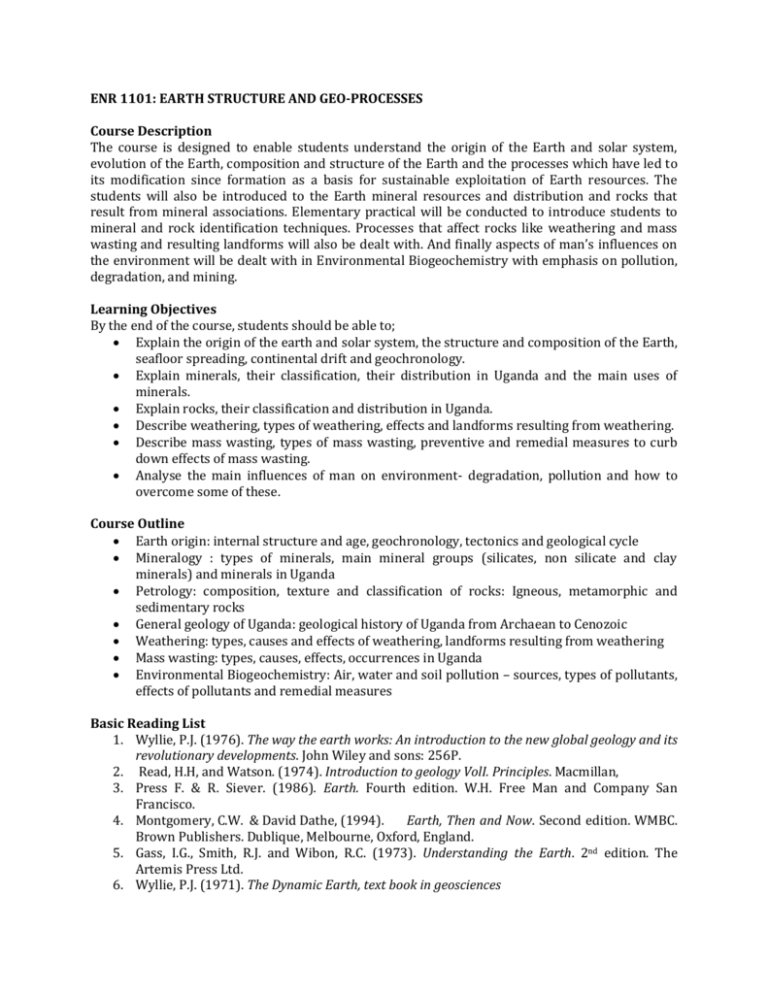
ENR 1101: EARTH STRUCTURE AND GEO-PROCESSES Course Description The course is designed to enable students understand the origin of the Earth and solar system, evolution of the Earth, composition and structure of the Earth and the processes which have led to its modification since formation as a basis for sustainable exploitation of Earth resources. The students will also be introduced to the Earth mineral resources and distribution and rocks that result from mineral associations. Elementary practical will be conducted to introduce students to mineral and rock identification techniques. Processes that affect rocks like weathering and mass wasting and resulting landforms will also be dealt with. And finally aspects of man’s influences on the environment will be dealt with in Environmental Biogeochemistry with emphasis on pollution, degradation, and mining. Learning Objectives By the end of the course, students should be able to; Explain the origin of the earth and solar system, the structure and composition of the Earth, seafloor spreading, continental drift and geochronology. Explain minerals, their classification, their distribution in Uganda and the main uses of minerals. Explain rocks, their classification and distribution in Uganda. Describe weathering, types of weathering, effects and landforms resulting from weathering. Describe mass wasting, types of mass wasting, preventive and remedial measures to curb down effects of mass wasting. Analyse the main influences of man on environment- degradation, pollution and how to overcome some of these. Course Outline Earth origin: internal structure and age, geochronology, tectonics and geological cycle Mineralogy : types of minerals, main mineral groups (silicates, non silicate and clay minerals) and minerals in Uganda Petrology: composition, texture and classification of rocks: Igneous, metamorphic and sedimentary rocks General geology of Uganda: geological history of Uganda from Archaean to Cenozoic Weathering: types, causes and effects of weathering, landforms resulting from weathering Mass wasting: types, causes, effects, occurrences in Uganda Environmental Biogeochemistry: Air, water and soil pollution – sources, types of pollutants, effects of pollutants and remedial measures Basic Reading List 1. Wyllie, P.J. (1976). The way the earth works: An introduction to the new global geology and its revolutionary developments. John Wiley and sons: 256P. 2. Read, H.H, and Watson. (1974). Introduction to geology VolI. Principles. Macmillan, 3. Press F. & R. Siever. (1986). Earth. Fourth edition. W.H. Free Man and Company San Francisco. 4. Montgomery, C.W. & David Dathe, (1994). Earth, Then and Now. Second edition. WMBC. Brown Publishers. Dublique, Melbourne, Oxford, England. 5. Gass, I.G., Smith, R.J. and Wibon, R.C. (1973). Understanding the Earth. 2nd edition. The Artemis Press Ltd. 6. Wyllie, P.J. (1971). The Dynamic Earth, text book in geosciences 7. Geological Dictionary. Methods of course delivery Mode of Assessment Lectures on key aspects of the course Course Work (Take home essay, Timed essay and Test) Practical sessions on mineralogy and petrology Practicals Field excursions to see rocks, geological Field Reports formations and processes Final written Exam

